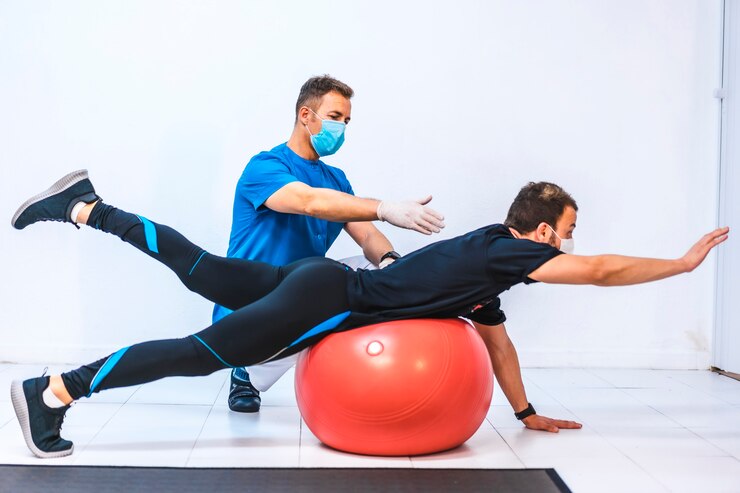
When it comes to overcoming pain, injury, or physical limitations, physiotherapy is one of the most effective and holistic approaches to recovery. Whether you’ve experienced an injury, are managing a chronic condition, or are simply looking to improve your strength and mobility, a physiotherapy clinic can be the key to getting you back on track. With a focus on restoring movement, increasing strength, and preventing future injuries, physiotherapy provides a comprehensive treatment plan tailored to your needs. Here’s how a physiotherapy clinic can help restore your mobility and strength.
1. Personalized Treatment Plans for Recovery
One of the key benefits of visiting a physiotherapy clinic is that treatments are tailored specifically to your individual needs. Unlike generic treatments, physiotherapists develop a personalized rehabilitation plan based on your condition, injury, and goals. When you visit a physiotherapy clinic, your physiotherapist will first assess your physical condition, take your medical history, and evaluate your movement patterns. From there, they will create a customized plan that targets your specific issues and helps restore your mobility and strength effectively.
This personalized care ensures that you receive the right interventions for your recovery, which increases the likelihood of a successful outcome.
2. Restoring Mobility After Injury or Surgery
Injuries, surgeries, or long-term health conditions can significantly affect your ability to move freely. Whether you’ve sprained an ankle, undergone knee surgery, or are recovering from a stroke, physiotherapy is essential in regaining your mobility. Physiotherapists use a variety of techniques to improve movement, including:
- Manual Therapy: Hands-on techniques like joint mobilization, massage, and soft tissue manipulation can help reduce stiffness, improve joint function, and ease pain.
- Stretching and Flexibility Exercises: These exercises are crucial for regaining range of motion in joints and muscles after they’ve been injured or immobilized. They help restore fluid movement and flexibility.
- Strengthening Exercises: Weak muscles or joints can make it harder to move effectively. Physiotherapists guide you through strengthening exercises that target the specific areas in need of improvement, which in turn supports your overall movement and stability.
By using these techniques, physiotherapy restores your mobility, enabling you to get back to your normal activities with ease.
3. Building Strength for Better Performance
Whether you’re recovering from an injury or simply aiming to improve your overall fitness, physiotherapy plays a significant role in building strength. Strengthening the muscles surrounding your joints is crucial for maintaining stability, preventing injuries, and enhancing physical performance. Physiotherapists design exercises that target both major muscle groups and smaller, stabilizing muscles to create a balanced, strong foundation.
For athletes, physiotherapy can also help improve performance by enhancing strength and flexibility, while also reducing the risk of future injuries. For individuals who are recovering from surgery or an injury, these strengthening exercises ensure that the body regains its normal functionality and endurance.
4. Improving Posture and Movement Patterns
Poor posture and movement patterns often contribute to muscle imbalances, pain, and injury. Physiotherapists don’t just treat symptoms—they focus on correcting the underlying issues that cause discomfort and affect mobility. In a physiotherapy clinic, professionals work with you to:
- Educate You on Proper Posture: Poor posture is often a result of habits developed over time, and it can lead to back pain, neck strain, and muscle fatigue. Physiotherapists teach you how to sit, stand, and walk properly to reduce strain on your body and prevent injury.
- Correct Movement Patterns: Improper movement techniques can contribute to long-term issues, such as joint pain, muscle stiffness, and repetitive strain injuries. Physiotherapists evaluate how you move and help you develop healthy, functional movement patterns that enhance mobility and prevent further damage.
By addressing posture and movement, physiotherapy ensures that your body works more efficiently, reducing strain on your muscles and joints and restoring your full range of motion.
5. Reducing Pain and Inflammation
Pain and inflammation are often associated with injuries, chronic conditions, or surgery recovery. Physiotherapy not only aims to reduce pain but also targets the source of the issue. Physiotherapists use a range of treatments to alleviate pain and inflammation:
- Heat and Cold Therapy: Heat and cold packs can soothe sore muscles, reduce swelling, and improve blood flow to the affected areas.
- Ultrasound Therapy: This therapy uses sound waves to penetrate deep into tissues, promoting healing, reducing inflammation, and easing pain.
- Electrical Stimulation (TENS): Transcutaneous Electrical Nerve Stimulation (TENS) is a technique that uses electrical impulses to manage pain by stimulating the nerves and blocking pain signals.
By managing pain effectively, physiotherapy makes it easier to regain mobility and strength without the need for medications or invasive treatments.
6. Preventing Future Injuries
Preventing future injuries is a crucial part of physiotherapy. Once your mobility and strength are restored, physiotherapists teach you techniques to maintain your physical health and prevent further issues from arising. This can include:
- Strengthening Weak Muscles: Muscles that are weak or imbalanced are often a cause of future injuries. Physiotherapists provide exercises to help strengthen weak areas and improve overall muscle function.
- Ergonomics and Activity Modifications: Physiotherapists educate you on how to adapt your daily activities to prevent strain and avoid re-injury. Whether you work at a desk, lift heavy objects, or perform repetitive movements, physiotherapists guide you in making changes to reduce the risk of injury.
- Home Exercise Programs: To maintain the benefits of physiotherapy, physiotherapists often prescribe exercises for you to do at home, ensuring that your body stays strong, mobile, and healthy.
7. A Holistic Approach to Rehabilitation
Physiotherapy is not just about treating the injury—it’s about improving your overall health and well-being. Physiotherapists take a holistic approach to rehabilitation, which means they consider the whole person, not just the injury. They assess your lifestyle, fitness level, and daily habits to ensure that your rehabilitation program is comprehensive and sustainable. This holistic approach helps you achieve long-lasting mobility and strength while also improving your general physical fitness.
Conclusion
A IVORY PHYSIOTHERAPY CLINIC IN Seawoods is an excellent place to restore mobility and strength. Through personalized treatments, expert care, and a holistic approach, physiotherapists help you recover from injury, alleviate pain, and improve your overall quality of life. Whether you’re managing chronic pain, recovering from surgery, or simply looking to boost your physical performance, physiotherapy can help you regain your strength, movement, and confidence. By choosing a physiotherapy clinic, you’re investing in your long-term health and wellness.







